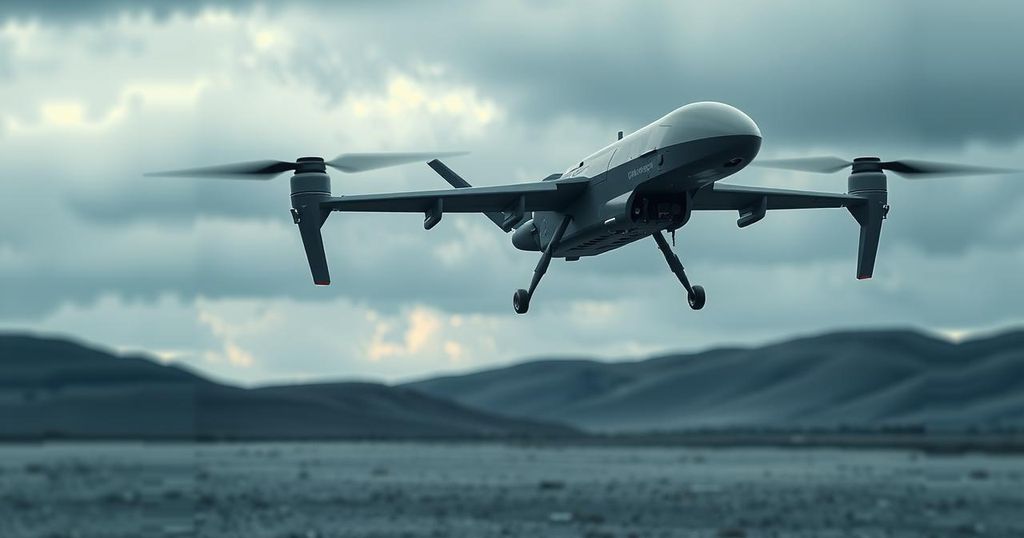The Implications of Russia’s Drone Warfare on Regional Dynamics

The article analyzes Russia’s drone capabilities and their implications, highlighting the influence of technology on military dynamics, especially following the recent developments in the battle of Kursk. Ukraine’s retreat, compounded by Russian superiority in drone warfare, indicates a significant shift, potentially allowing Iranian proxies to adopt similar tactics against Israel. The evolving role of drones represents a critical area of focus for military strategy moving forward.
Russia is reportedly advancing in its drone capabilities, particularly evident in the recent battlefield developments in Ukraine. The BBC highlighted Ukraine’s retreat from Kursk, a strategic region that has been under Ukrainian control since August 2024. With the substantial involvement of Russian drones, this situation marks a critical shift, as Ukrainian offensives increasingly falter against Russian forces. The employment of Iranian Shahed kamikaze drones by Russia has revealed a notable learning curve in drone warfare since the conflict’s onset.
The BBC article emphasizes the implications of Russia’s drone warfare on regional dynamics, especially concerning Iran’s proxy forces in the Middle East. Following the Hamas attack on October 7, Iranian-backed groups are expected to replicate Russia’s strategies and technology against Israel, this carries significant ramifications. Recent findings from Conflict Armament Research indicate Houthi militias are also enhancing their drone capabilities with hydrogen fuel cells.
Key insights from the Kursk operations reveal that traditional military tactics are crucial in contemporary warfare. Ukrainian forces, despite deploying approximately 12,000 of their most trained soldiers, faced overwhelming opposition from tens of thousands of Russians. The reliance on a singular supply route for Ukrainian forces mirrored challenges faced by armies in previous conflicts, leading to chaotic retreats and abandonment of equipment.
Russian superiority in drone technology played a significant role in their success. The report states that Russia deployed advanced drone units capable of executing the roles of both kamikaze and first-person-view (FPV) operations, effectively managing logistics routes. Ukrainian soldiers noted a significant disadvantage as Russian aerial strikes became more precise and frequent, leading to a stark change in the battlefield dynamics.
Russian strategies in Kursk involved the use of coordinated drone swarms — a methodology where multiple drones operate simultaneously to monitor and engage targets. This contrasts with previous military engagements seen in conflicts such as Nagorno-Karabakh, where drones played a pivotal role in tactical victories. Such developments underscore the necessity of adapting to emerging warfare technologies, especially for advanced militaries like Israel.
The insights drawn from the battle of Kursk suggest a pivotal moment in the evolution of military strategies. As nations respond to the changing landscape of warfare, the lessons learned here will be instrumental in maintaining a strategic edge, particularly concerning the use of drone technology in both Eastern Europe and the Middle East. Armed groups like Hamas are likely to continue exploiting these advances, illustrating the need for innovative countermeasures.
In summary, Russia’s evolving drone strategies, particularly highlighted by the conflict in Kursk, have significant implications both for Ukraine and for Iran’s proxy engagements. The lessons derived from military tactics and drone warfare emphasize the importance of adapting to new technologies in modern combat scenarios. As armed groups in the Middle East observe and potentially replicate these advancements, the strategic landscape of warfare will continue to shift, necessitating vigilance and adaptability from established military powers.
Original Source: www.jpost.com






